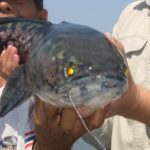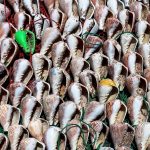Trapping fish in bamboo traps in Southeast Asia is normally a static affair. These fishing traps are used in still waters with or without bait inside and checked at least once daily. It was a new experience to see somebody trapping fish with bamboo traps on the go in fast-flowing waters.
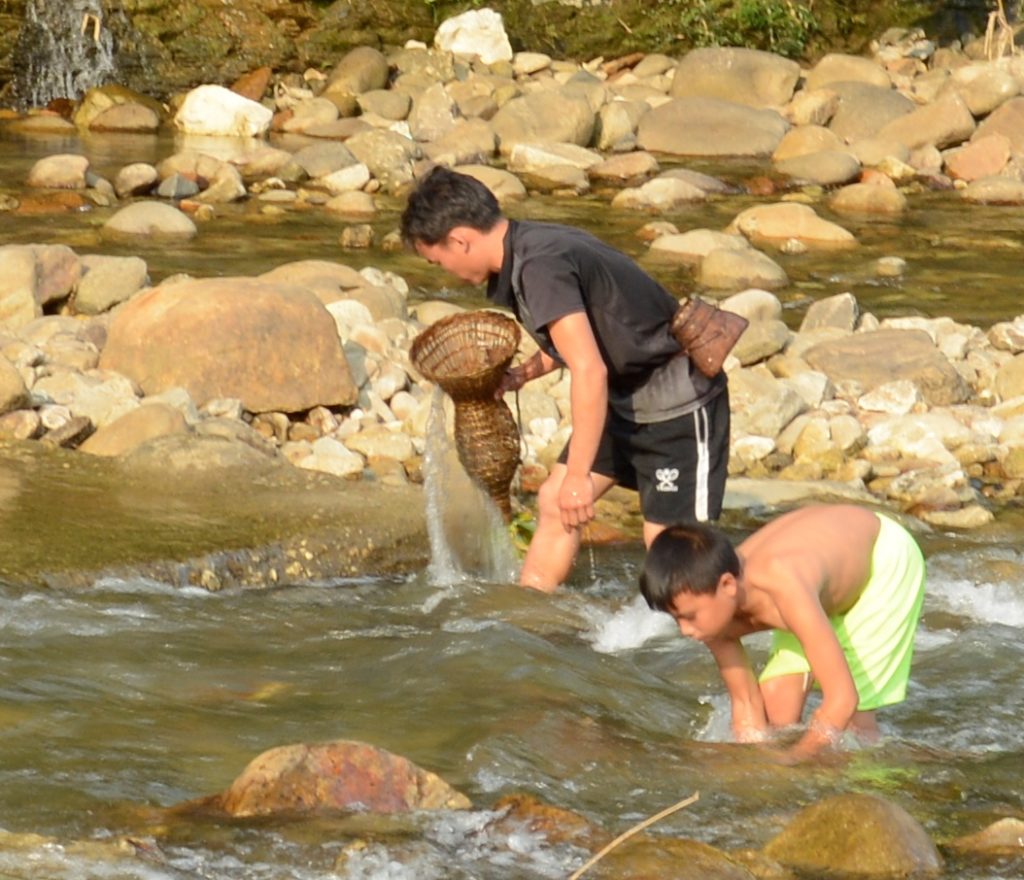
Sa Pa is a town in the far north of Vietnam, within the Hoang Lien So mountains. Its elevation is 1600 m above sea level. I observed fish trapping in the Cau May brook. This brook was, on average, about 20 meters wide and fast-flowing. The whole brook was strewn with rounded boulders of various sizes. Possible species of fish to be caught can be seen here. In the holding basket of one of the fishermen, I only saw loaches (Schistura sp.).
What does the fishing trap look like?
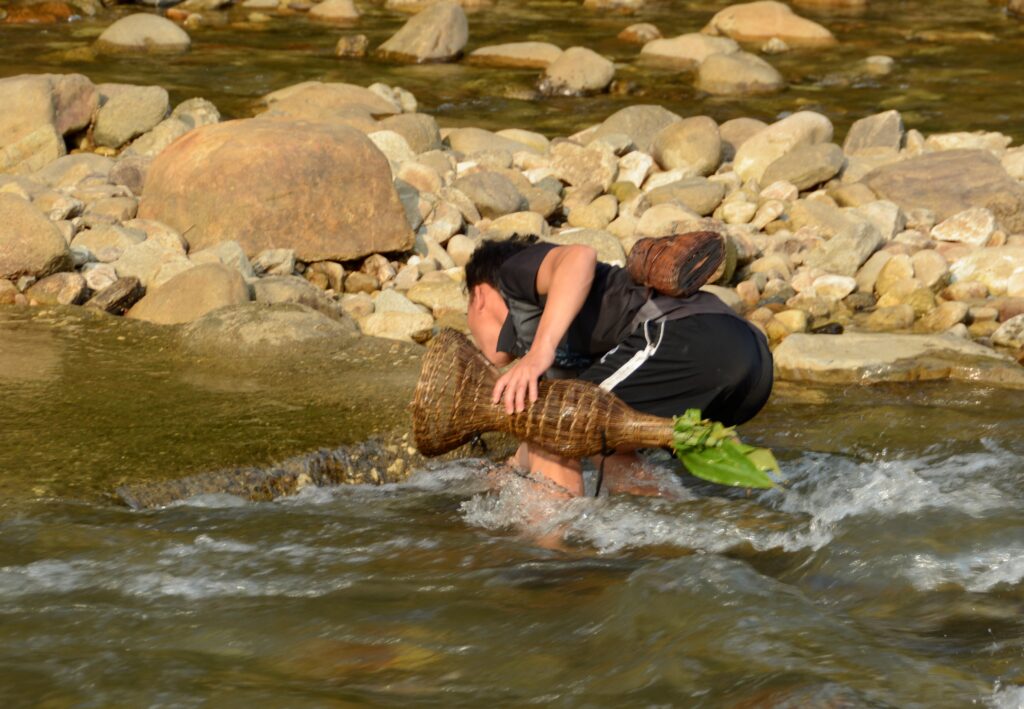
Trapping baskets are about one meter long and consist of a wide opening cone that extends into the catch room. The neck area between the opening cone and the catch room is quite slim, so the basket can be held by one hand in this area. An extended opening hole is at the back end of the catch room. This will be closed with green, broad leaves. A string is attached outside the basket for easier carrying on land.
Fishing technique by flushing out fish underneath stones
Fishing is done so that fishermen are looking for deeper spots in the river. In these spots, the basket cone can be completely submerged. It will either be held temporarily underwater by a stone squeezed between stones or held down by the fishing partner.
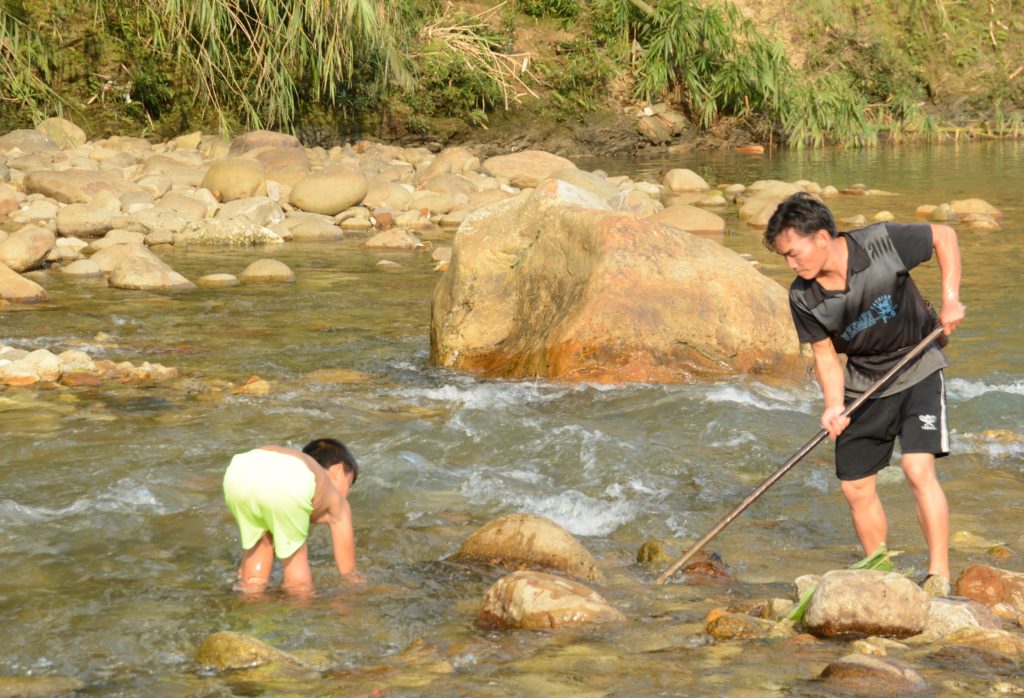
After that, the fisherman disturbs the surrounding area with his feet or hands, or he uses an iron crowbar to lift bigger stones around the trap. This will flush out fish trying to find a new hiding place. This hiding place could also be the bamboo basket. As the water streams through the woven basket and it is slightly dimmed there, fish will likely regard it as a hiding place.
Fish can remember occurrences and places for many months. It is not correct that fish have a memory time span of only 9 seconds, as believed in older days. However, the river changes constantly due to its movements. Therefore, a new natural material that has been there in place will be seen as a natural occurrence by fish.
Fishing technique by constricting fish escape routes

Another catching technique with fishing traps is walking the river upstream and holding down the trapping basket, especially at constrictions after deeper passageways and sideward of the fisherman. Fish will sense vibrations via the lateral line and see the fisherman below and above the water. And will try to escape from them. The best escape route is the fastest escape route. They, therefore, swim with the current downstream. Upstream in fast-flowing water, they are considerably slower and need far more energy. And if there is a constriction after the passageway, they will take that route. Mainly if the water flows freely through the basket and the area is shaded.
Fish caught by one of these two tactics by fishing traps will be offloaded live into the fisherman’s holding basket. However, they will succumb after some time due to a lack of oxygen.
Lessons learned from fish trapping on the go near Sa Pa
- Trapping fish in baskets in fast-flowing waters seems to be easy. But is hard work as the water has to be read constantly. And often a crowbar has to be used for lifting stones
- The water is cold, and the rocks are slippery. Walking in the water for an extended time is not very pleasant.
- Fish caught this way are relatively small, mainly about 12–15 cm long. However, as in this area, no piscivorous animals occur, and fish are plentiful. Two hours of fishing is enough for a meal for the family.
Basket fish traps at the seashores of Eastern Africa
Trapping Snakeskin Gourami in the Mekong Delta
Using a stomping basket to catch fish in Vietnam
Crafting a bamboo fish trap in Thailand
.




